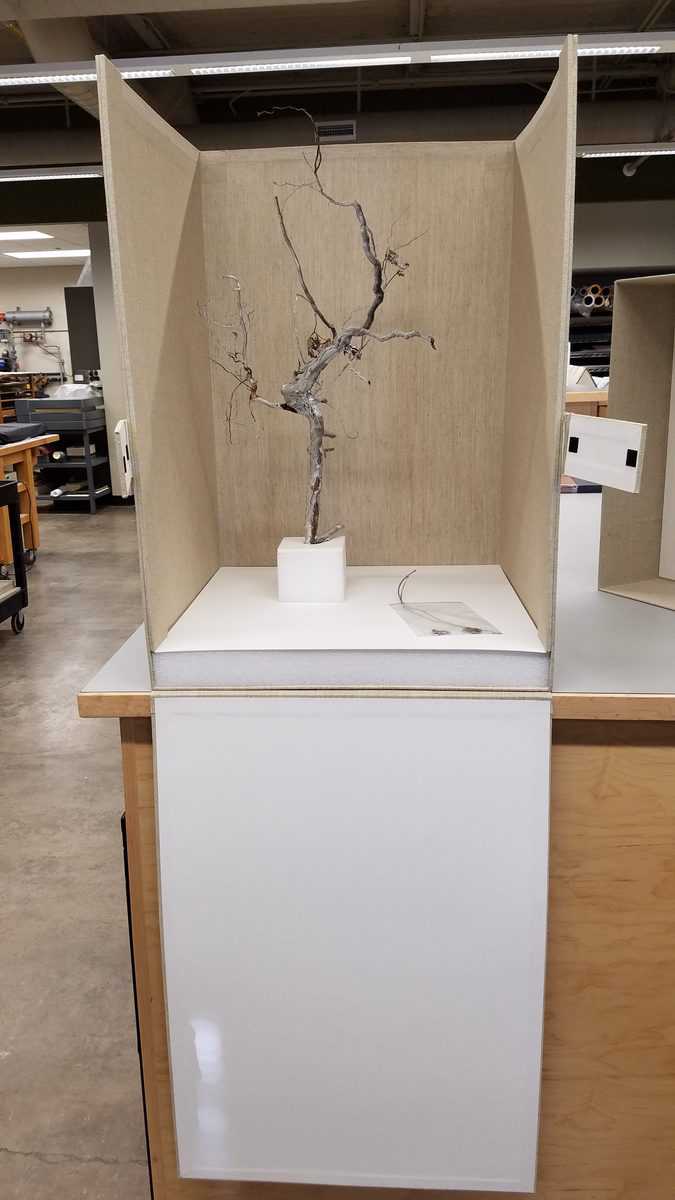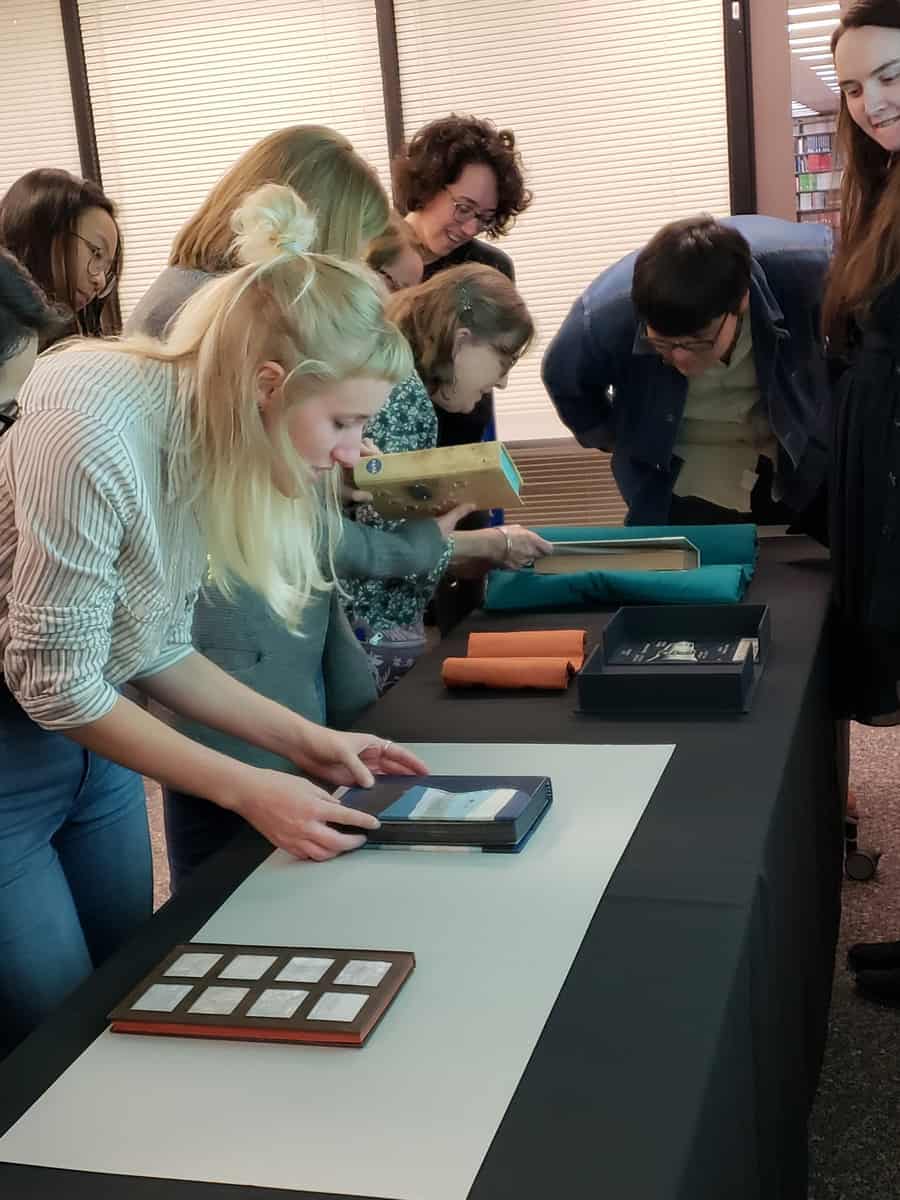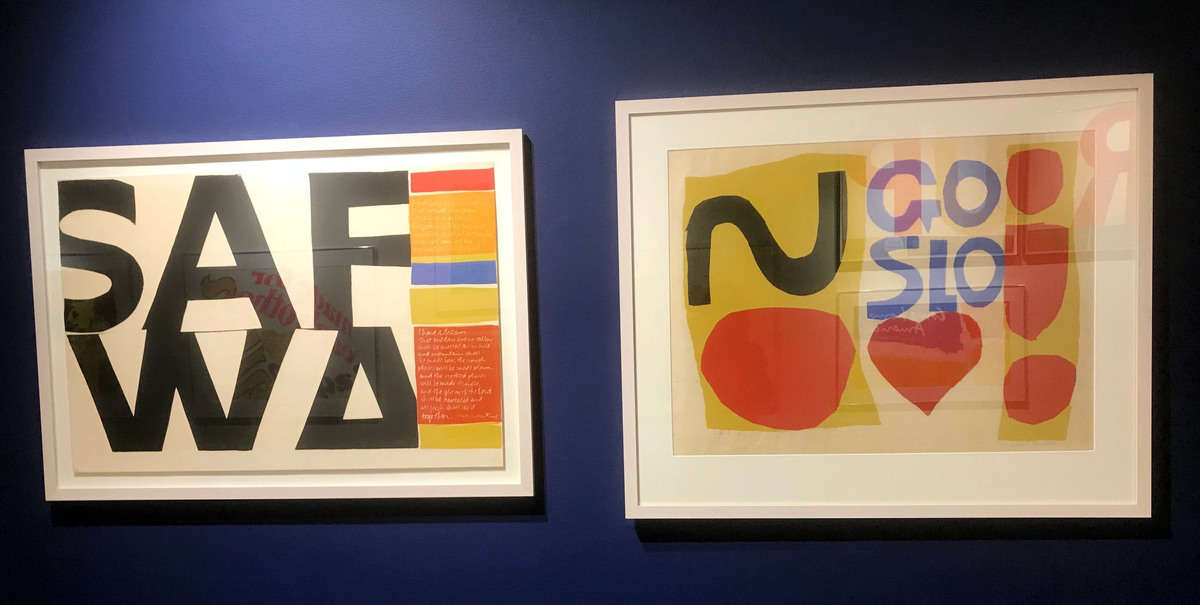As part of his work in the conservation lab, Bill Voss constructs enclosures to house delicate artifacts. He recently completed a large custom enclosure for one item from Andrei Codrescu’s Art Installation Piece. Codrescu is a Romanian-American writer and artist. His artwork and poetry was acquired for the UI Libraries’ International Dada Archive in SpecialContinue reading “Not just paper and books: Conservation staff create custom enclosures for unique artifacts”
Category Archives: Object conservation
Deborah Howe visits as part of the William Anthony Endowment
Last week the University of Iowa Library’s Preservation and Conservation Department were please to host Dartmouth College’s Collections Conservator Deborah Howe as part of the William Anthony Endowment lecture series. On Thursday, October 4th Howe gave a lecture at the Main Library titled Old Books, New Books, and In Between Books: a Brief Look atContinue reading “Deborah Howe visits as part of the William Anthony Endowment”
Conservation Staff Install Works From the Iowa Women’s Archive at Dubuque Museum of Art
Recently a group of staff from the University of Iowa Library’s Conservation Lab journeyed up to Dubuque to install some pieces lent from the Iowa Women’s Archive (IWA) to the Dubuque Museum of Art. The materials and artwork are from the Josephine Pletscher Papers collection, donated to IWA by Kimberly Kirkpatrick Sparling and Ann SaylorContinue reading “Conservation Staff Install Works From the Iowa Women’s Archive at Dubuque Museum of Art”
UV Photography in Buffalo
Last month, Assistant Conservator Brenna Campbell traveled to the Art Conservation Department at SUNY Buffalo State to take a workshop on using UV photography to learn more about cultural heritage objects. This qualitative technique is valuable both for identifying areas of change within an object — either from damage or treatment — as well asContinue reading “UV Photography in Buffalo”
Clay Tablet Gets Custom Box
Tuesday, November 12, 2013 Submitted by Bill Voss This neo-Sumerian clay tablet, recording the sacrifice of a kid goat dates to ca. 2050 B.C. and is frequently shown to students as an early example of writing in cuneiform accompanied by the impression of a cylinder seal. Due to its frequent use it was decided toContinue reading “Clay Tablet Gets Custom Box”
Busy Day at the Cultural Recovery Center in Brooklyn
Wednesday, February 13, 2013 We had a very busy day at the Cultural Recovery Center in Brooklyn. The volunteer paintings conservator examined a couple of paintings that an artist brought in during the morning, just before noon she removed an artwork from a frame and examined the piece for mold and damage, in the afternoonContinue reading “Busy Day at the Cultural Recovery Center in Brooklyn”
Salvaging Artists’ Works After Hurricane Sandy
Thursday, February 7, 2013 A couple years ago, I received training so I could become part of a national cultural disaster response team called AIC-CERT (American Institute for Conservation Collections Emergency Response Team). After Hurricane Sandy, AIC (American Institute for Conservation) and the Foundation of the American Institute for Conservation established a Cultural Recovery CenterContinue reading “Salvaging Artists’ Works After Hurricane Sandy”
Record Return!
We have been working on many projects for various museums that got hit by the flood of 2008. Remember the entry way back on December 18 of 2009? We may have sounded elated about our accomplishments then, but now we are for sure! We have finally finished the rest of the flood-damaged phonograph records. AllContinue reading “Record Return!”
Cleaning Busts
Thursday, February 11, 2010 One project that Kallie is working on is cleaning a collection of busts. After Caitlin tested a couple different treatment methods she settled on using a mixture of water and photo flo roughly a 4:1 ratio. Kallie has been using swabs and cotton pads to remove the mud covering the busts.Continue reading “Cleaning Busts”
Two Vernons and a Typewriter
Monday, January 4, 2010 One of our quandaries was how to clean Vernon Smith’s typewriter, an important artifact from the African American Museum. We found our answer when we contacted Vernon Steve at Steve’s Business Machines (formerly Steve’s Typewriter) in Iowa City. Vern cleaned and repaired the typewriter but did not repaint it. The typewriterContinue reading “Two Vernons and a Typewriter”


